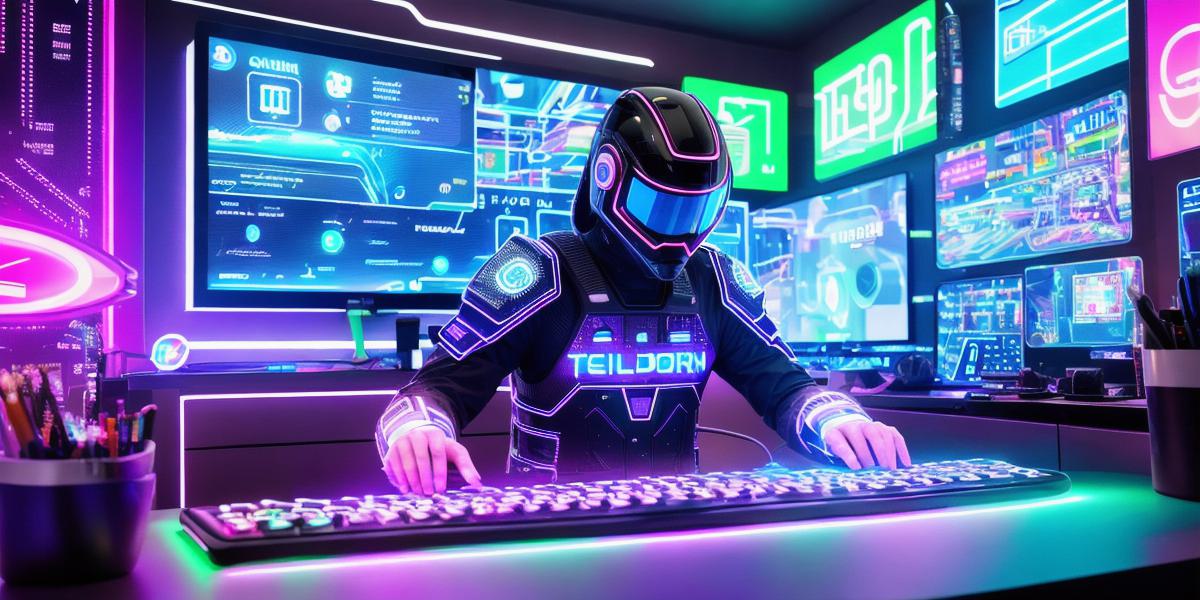Introduction
Gaming has come a long way since its early days, evolving from simple text-based adventures to immersive virtual worlds. The latest innovation in the gaming industry is blockchain technology, which enables secure and transparent transactions through the use of non-fungible tokens (NFTs). In this comprehensive guide, we will explore how NFTs can revolutionize gaming, improve player engagement, and provide new revenue streams for game developers.
What are NFTs?
An NFT is a digital asset that represents ownership of a unique piece of content or data. It is secured on a blockchain, which makes it immutable and transparent. NFTs can be anything from art to collectibles, video clips to music tracks, and even virtual real estate in games. The most popular use case for NFTs is in the gaming industry, where they are used to represent in-game items, characters, and other assets.
How do NFTs work?
NFTs work through the use of blockchain technology. When a game developer creates an NFT, it is stored on a blockchain network, which provides a secure and transparent ledger of all transactions related to that asset. This means that ownership of the NFT can be easily transferred between players, without the need for intermediaries such as game publishers or payment processors. The use of blockchain also ensures that each NFT is unique and cannot be duplicated or counterfeited.
The Benefits of NFTs in Gaming
NFTs offer a range of benefits to game developers, players, and stakeholders alike:
- Improved player engagement: NFTs can be used to create limited-edition items, characters, or quests, which encourages players to engage with the game more actively. This can lead to increased retention rates and a more loyal player base.
- New revenue streams: By selling NFTs directly to players, game developers can generate new revenue streams without relying on in-app purchases or advertising. This can be especially attractive for indie game developers who struggle to monetize their games.
- Enhanced security and transparency: Blockchain technology ensures that transactions related to NFTs are secure and transparent, which reduces the risk of fraud and helps build trust between players and developers.
- Increased ownership and authenticity: NFTs provide players with a unique sense of ownership and authenticity, as they can easily prove that they own a particular asset or character. This can be especially appealing to collectors and enthusiasts who value rare and unique items.
Real-life Examples of NFTs in Gaming
There are already several successful examples of NFTs being used in the gaming industry:
- Cryptokitties: This is one of the most well-known examples of NFTs in gaming. Cryptokitties is a blockchain game that allows players to breed and collect unique digital cats, which can be sold on the open market for thousands of dollars.

- NBA Top Shot: The National Basketball Association (NBA) has partnered with Dapper Labs to create NBA Top Shot, an NFT-based platform that allows fans to collect and trade video clips of iconic NBA moments. These NFTs are sold on the open market and have been valued at millions of dollars.
- Rare Digital Art: Many artists are now using NFTs to sell their digital art directly to collectors, bypassing traditional galleries and auction houses. This has created a new market for rare and unique digital art pieces.
FAQs
Q: What is the difference between NFTs and cryptocurrencies?
A: NFTs are digital assets that represent ownership of a unique piece of content or data, while cryptocurrencies are digital currencies that can be used to purchase goods and services.
Q: How do NFTs
